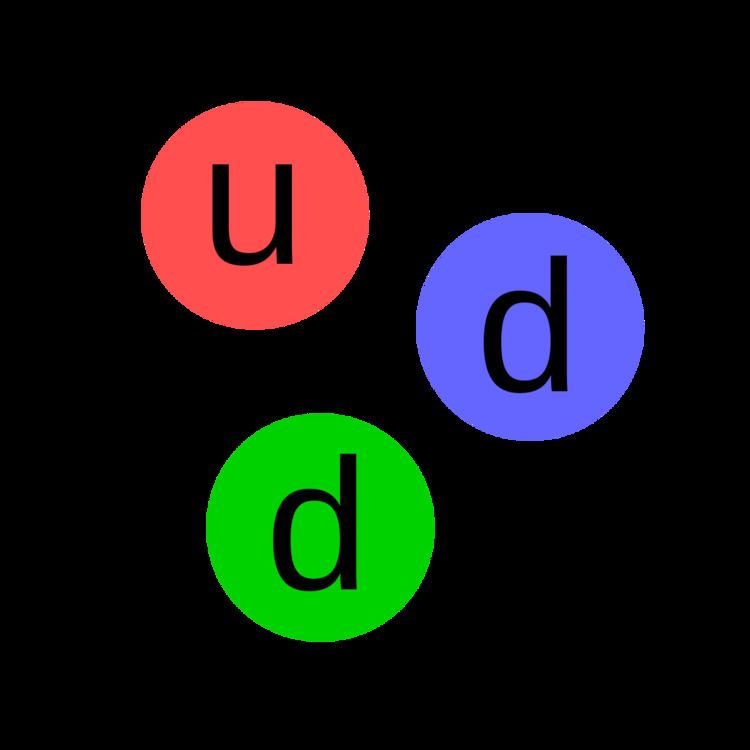 | ||
Ultracold neutrons (UCN) are free neutrons which can be stored in traps made from certain materials. The storage is based on the reflection of UCN by such materials under any angle of incidence.
Contents
Properties
The reflection is caused by the coherent strong interaction of the neutron with atomic nuclei. It can be quantum-mechanically described by an effective potential which is commonly referred to as the Fermi pseudo potential or the neutron optical potential. The corresponding velocity is called the critical velocity of a material. Neutrons are reflected from a surface if the velocity component normal to the reflecting surface is less or equal the critical velocity.
As the neutron optical potential of most materials is below 300 neV, the kinetic energy of incident neutrons must not be higher than this value to be reflected under any angle of incidence, especially for normal incidence. The kinetic energy of 300 neV corresponds to a maximum velocity of 7.6 m/s or a minimum wavelength of 52 nm. As their density is usually very small, UCN can also be described as a very thin ideal gas with a temperature of 3.5 mK.
Due to the small kinetic energy of an UCN, the influence of gravitation is significant. Thus, the trajectories are parabolic. Kinetic energy of an UCN is transformed into potential (height) energy with ~102 neV/m.
The magnetic moment of the neutron, produced by its spin, interacts with magnetic fields. The total energy changes with ~60 neV/T.
History
It was Enrico Fermi who realized first that the coherent scattering of slow neutrons would result in an effective interaction potential for neutrons traveling through matter, which would be positive for most materials. The consequence of such a potential would be the total reflection of neutrons slow enough and incident on a surface at a glancing angle. This effect was experimentally demonstrated by Fermi and Walter Henry Zinn and Fermi and Leona Marshall. The storage of neutrons with very low kinetic energies was predicted by Yakov Borisovich Zel'dovich and experimentally realized simultaneously by groups at Dubna and Munich.
UCN production
In 1979, three methods for the production of UCN were described: 1. By F.L. Shapiro: The use of a horizontal evacuated tube from the reactor, curved so all but UCN would be absorbed by the walls of the tube before reaching the detector. 2. By Albert Steyerl: Neutrons transported from the reactor though a vertical evacuated guide about 11 meters long are slowed down by gravity, so only those that happened to have ultracold energies can reach the detector at the top of the tube. 3. A neutron turbine in which neutrons at 50 m/s are directed against a bladed turbine with receding tangential velocity 25 m/s, from which neutrons emerged after multiple reflections with a speed of about 5 m/s.
Reflecting materials
Any material with a positive neutron optical potential can reflect UCN. The table on the right gives an (incomplete) list of UCN reflecting materials including the height of the neutron optical potential (VF) and the corresponding critical velocity (vC). The height of the neutron optical potential is isotope-specific. The highest known value of VF is measured for 58Ni: 335 neV (vC=8.14 m/s). It defines the upper limit of the kinetic energy range of UCN.
The most widely used materials for UCN wall coatings are beryllium, beryllium oxide, nickel (including 58Ni) and more recently also diamond-like carbon (DLC).
Non-magnetic materials such as DLC are usually preferred for the use with polarized neutrons. Magnetic centers in e.g. Ni can lead to de-polarization of such neutrons upon reflection. If a material is magnetized, the neutron optical potential is different for the two polarizations, caused by
where
Each material has a specific loss probability per reflection,
which depends on the kinetic energy of the incident UCN (E) and the angle of incidence (θ). It is caused by absorption and thermal upscattering. The loss coefficient η is energy-independent and typically of the order of 10−4 to 10−3.
Experiments with UCN
The production, transportation and storage of UCN is currently motivated by their usefulness as a tool to determine properties of the neutron and to study fundamental physical interactions. Storage experiments have improved the accuracy or the upper limit of some neutron related physical values.
Measurement of the neutron lifetime
Today's world average value for the neutron lifetime is
Measurement of the neutron electric dipole moment
The neutron electric dipole moment (nEDM) is a measure for the distribution of positive and negative charge inside the neutron. No nEDM has been found until now (May 2008). Today's lowest value for the upper limit of the nEDM was measured with stored UCN (see main article).
Observation of the gravitational interactions of the neutron
Physicists have observed quantized states of matter under the influence of gravity for the first time. Valery Nesvizhevsky of the Institut Laue-Langevin and colleagues found that cold neutrons moving in a gravitational field do not move smoothly but jump from one height to another, as predicted by quantum theory. The finding could be used to probe fundamental physics such as the equivalence principle, which states that different masses accelerate at the same rate in a gravitational field (V Nesvizhevsky et al. 2001 Nature 415 297). UCN spectroscopy has been used to limit scenarios including dark energy, chameleon fields, and new short range forces
Measurement of the A-coefficient of the neutron beta decay correlation
The first reported measurement of the beta-asymmety using UCN is from a Los Alamos group in 2009. The LANSCE group published precision measurements with polarized UCN the next year. Further measuments by these groups and others have led to the current world average:
